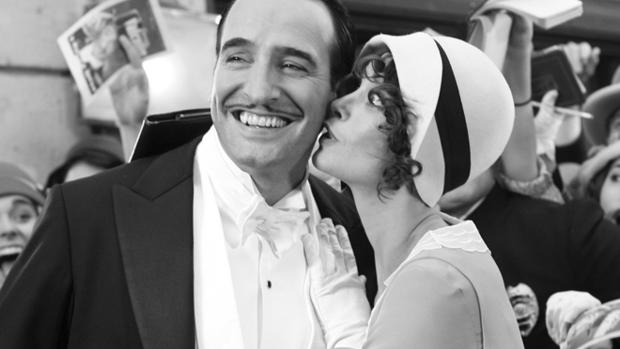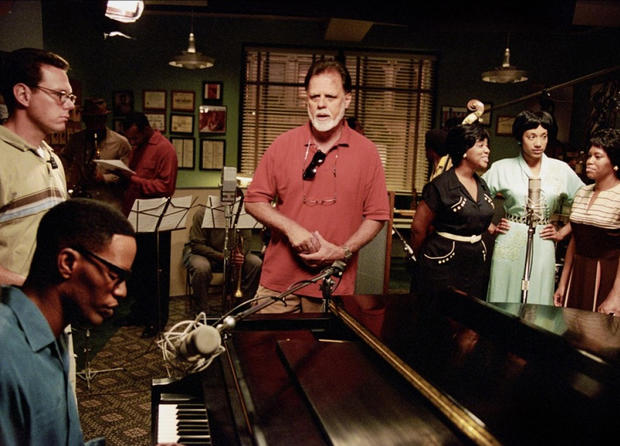Props to Hollywood's prop masters
Put a few carefully selected props on the set and all of a sudden you're GOING HOLLYWOOD. Supplying the perfect movie prop is an art all to itself. With Rita Braver now we'll take a ride back through time:
"The Artist," a silent film about the making of silent films, is this year's surprise breakout movie, with 10 Oscar nominations, including Best Picture.
And a key reason it works so well is the way we're transported back in time with the look and feel of the late 1920s.
So how does Hollywood make such magic?
With props like a 1929 Hudson, one of several antique vehicles used in "The Artist." For the creators of the film, and the makers of other period movies, the journey into the past begins in North Hollywood, at a place called History for Hire.
It's a sprawling, 33,000-square-foot facility known as a prop house.
The props in their collection could be measured well over a hundred thousand, says Jim Eleya. He and Pam Elyea started stockpiling items from the past in 1985, earning a reputation for their historical documentation of when certain items would have been used.
They collect anything they think a filmmaker might need, from the mundane (old dentures) to the earth-shattering: Nuclear weapons!
"We have Fat Man and Little Boy from World War II," said Pam.
"Those are replicas, I presume," said Braver.
"I hope, I hope! You know, 'don't ask, don't tell,'" replied Pam.
"It's a very competitive market," laughed Jim. "You have to be ready."
And they are ready: With generations of movie, TV and still cameras, and lots of household goods, from vintage groceries to vacuum cleaners and toasters - each item a mini-film star.
"We love seeing our props on camera," said Jim. "It's as though it was our children on screen."
Pam Eleya showed us a whole table full of items used in that film, including the movie projector the character of George Valentin uses to watch his films at the very end.
Laurence Bennett is up for an Oscar this year for his work as production designer on "The Artist." His job was to create the atmosphere of the film.
"Obviously, we need it to be absolutely the right cameras, and this is a place in Hollywood where you're going to find them," Bennett said.
But as much as Bennett appreciates historical accuracy, he admits that he is not a stickler for every detail:
"On an emotional level, it needs to FEEL right," he told Braver. "You know, we're not making documentaries. We're trying to take the viewer on a trip. We're trying to transport them to another time. The details that we include in the frame are evocative of that period, but you don't want any one of those decisions to draw too much attention to itself."
"Is there anything really historically inaccurate in this film?" asked Braver.
"I'm sure there are a few that people will bring to my attention," he said.
"Has that happened at this point yet?"
"No! I think we acquitted ourselves well in terms of making this world," Bennett said.
He does have reason to be wary. These days there are websites totally devoted to pointing out mistakes of history in films - making fun of movies like "Braveheart" for showing Scotsmen wearing kilts 300 years before they actually came into use.
And there are some directors who believe that history should NEVER give way to artistry.
Taylor Hackford, who directed the 2004 bio-pic about legendary musician Ray Charles, said, "When you make a film like 'Ray' you have to be concerned about the look. I think [of] the history of that period as another character in the film."
When Hackford made "Ray," he even trucked onto the set some of the red Georgia dirt that Charles remembered from the years before he went blind.
Then there were the singer's glasses:
"The first time you see him, he's got these kind of round, kind of foolish eyeglasses on, 'cause he's a country hick," said Hackford. "And then he goes to the city, and all of a sudden you see those glasses start to change, until finally he pioneered the wraparounds, and literally the trademark of Ray Charles was some wraparound sunglasses."
Hackford argues that filmmakers have a responsibility to get the little details (like a microphone) right, because sometimes that's all moviegoers ever learn about an era or a person.
"I believe that if you're doing a period movie and you have a great many faux pas in that film - in other words, nothing matches, nothing fits the setting - it's a lost opportunity," he said.
But there's plenty of opportunity to get it right at History for Hire, which provided musical instruments as well as recording gear used in "Ray."
The folks there hope to keep their leading role in Hollywood for years to come.
"It really is true that people get most of their history lessons from movies and TV," said Jim Eleya.
"Does that bother you or do you think that's okay?" asked Braver.
"It's not the best way to do it, but as long as that's what's happening, we have an obligation to do the best historical recreations we can," he said.
For more info:
- History for Hire
- "The Artist" (Weinstein Company)
- laurencebennettfilm.com>


